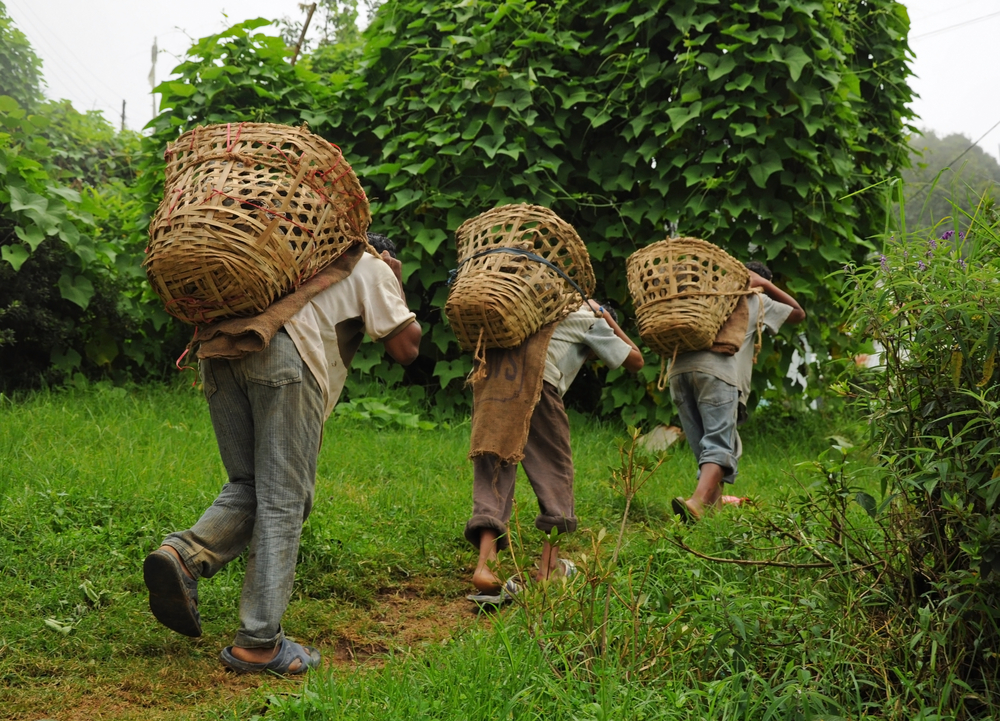Modern-Day Slavery: Does It Still Exist?
Curious about what our lives would be like if Hashem hadn't freed us from Egypt? Take a look at the lives of modern-day slaves.

Avadim hayinu (We were slaves) to Pharaoh in Egypt. Often, during the Passover Seder, we find it hard to connect with the feeling of slavery: It seems to us like slavery is a thing of the distant past, irrelevant to our lives. If asked when slavery vanished from the world, our minds might drift to the American Civil War. Since Lincoln freed the black slaves, hasn’t slavery been eradicated?
Sadly, this is not the case. Believe it or not, today, over twenty million slaves and bondspeople live in our world. Want to understand the significance of "If Hashem had not taken our ancestors out of Egypt, we, our children, and our descendants would still be enslaved to Pharaoh in Egypt"? Take a glimpse into the lives of contemporary slaves.
 (Photo: shutterstock)
(Photo: shutterstock)Benjamin Skinner is one of the renowned researchers of modern slavery. For four years he wandered the remotest corners of the globe, posing as a slave trader, interviewing slave dealers and sex traffickers who ended up in jail, suffering tropical diseases and accidents in his journey to some of humanity's darkest corners. His conclusion? The slaves of today are treated worse than ever. Those who use them seek large profits and disregard their lives - to them, the slave is like a disposable tool to be used, discarded, and replaced. Skinner, named by National Geographic as one of the 'Great Explorers of 2008,' published a bestseller on his research entitled 'A Crime So Monstrous'.
Skinner inherited his interest in slavery from his ancestors, Americans belonging to the peace-loving Quaker religion who fought against slavery in the U.S. until its successful abolition. "My great-great-grandfather fought with the Connecticut artillery corps to abolish slavery, believing it was an atrocity to be eradicated from the world, even at the cost of human life," he recounts. Yet, despite all these sacrifices, he notes, "Today, there are more slaves than ever. Twenty-seven million people worldwide are held against their will, forced into labor, threatened, subjected to violence, fraud, and unpaid. This is a very specific definition that undoubtedly defines slaves. While governments worldwide recognize only 12.3 million slaves and bondspeople, field-active organizations insist that the number is much closer to 27 million."
As proof of the diminished value of slaves today, Skinner notes that during American slavery, a young and healthy slave would have cost around forty thousand dollars in today’s money. In Bucharest, however, he was offered a young slave girl for sale for fifty dollars. Modern slave traders view their slaves and bondspeople not as valuable human capital (as slave traders of old) but as a cheap and readily available product – like a standard plastic broom.
 Benjamin Skinner, researcher of modern slavery
Benjamin Skinner, researcher of modern slaveryThe countries where the mark of slavery is particularly found are in Southeast Asia, Africa, and parts of South America. India holds more slaves than any other country, followed by Pakistan, Nepal, and Bhutan.
In India, Skinner claims, there are probably more slaves than in all other countries combined. The Indian government, for the record, specializes in denying the issue entirely. When confronted with the numbers by international bodies, officials shrug their shoulders, citing India's large population and widespread poverty, claiming these are impoverished people working for exploitative employers and nothing beyond that.
"And this is simply not true," says Skinner. "I’m speaking of people who cannot leave, who must continue hard labor for the same individual. I met a slave in North India who had been enslaved his entire life, from birth! His grandfather owed a debt of 62 cents, so he and all his descendants were enslaved to the creditor. Three generations later, the debt remains unpaid – from the creditor’s perspective, the three generations’ hard work has only covered the interest. Anyone who dares to raise a head is threatened with violence. This is a poor and illiterate family. They do not know their rights. They do not know they are entitled to different lives."
What are these Indian slaves employed in? In the case of the family from North India, Skinner reports they crush gigantic stones into gravel to upgrade the infrastructure in India, and then grind that gravel into glass sand. Their handiwork yields substantial profits for their owners, who of course do not dream of sharing the profits with the slaves.
In Brazil, many slaves are trapped through deceit. Representatives of mine owners appear in poor Brazilian villages and offer work in the mines to all who want it. The destitute villagers, desperate for work, gather in droves. Once they reach the mine, however, they discover that the transportation to the mine – which the mining company organized – cost a fortune, and now they owe the company a debt they will never be able to repay. They are forced to stay and work for free, allegedly 'repaying the debt'. Any attempt to escape meets with armed guards ready to shoot them to death.
 (Photo: shutterstock)
(Photo: shutterstock)In Africa, many Saharan countries turn a blind eye to slavery. Mauritania was the last country in the world to outlaw slavery 35 years ago. But slavery persists: out of a population of 3.5 million people, 800,000 live as slaves and bondspeople. Rarely does one of them dare to escape or sue those holding them against their will: the entire community will rise against them, and the government will usually dismiss their claims as baseless. Similarly, as in many places, those born into slavery often fear status change. A 28-year-old slave named Malka, who has been herding goats since childhood, explained to a 'Guardian' journalist: "I didn't want to leave my master because I was afraid to leave my family behind. Besides, I was scared because I heard that you need money to live, and I had never seen money and didn't know what it was."
Slavery, as the stories of birth-bound slaves prove, is not only a risk for adults. Many children live in conditions of slavery across the world. In Haiti alone, a close neighbor to the United States, 300,000 child slaves live. "When I cited this figure to Dan Harris from ABC," Skinner relates, "he expressed skepticism. So, I suggested he accompany me to Haiti. Within ten hours, he left and returned from his Manhattan office – but in those ten hours, he managed to meet no fewer than three different slave traders offering for sale three different little girls. For a price of less than fifty dollars each. The poverty there is so great you could enter a village and obtain a child in exchange for a used garment, a little food, or even for free."
 (Photo: shutterstock)
(Photo: shutterstock)In the Western world, Skinner adds, slavery mainly exists in two forms: the kind that's largely concealed from public sight, such as domestic servitude and sex trafficking. Though Western countries are aware of the issue and trying to combat it, they have not yet succeeded in eradicating even the slavery within their borders.
Is there hope to eliminate modern slavery? Experts say yes, but only through international cooperation, tightening UN supervision of all its members, and sanctions on countries not enforcing anti-slavery laws. Attempting to ransom all of the world's slaves, for example, would not only fail but would actually increase the number of slaves worldwide. Just as in hostage cases, if agents emerge willing to pay cash for a large number of slaves and bondspeople, slave traders would only increase their activity – and raise prices.
Until slavery truly vanishes from the world, however, we might better internalize the grace in the Exodus from Egypt. We were slaves to Pharaoh in Egypt. And since slaves still exist - it's easier to understand how, without the miracle of redemption, we too would remain enslaved.

